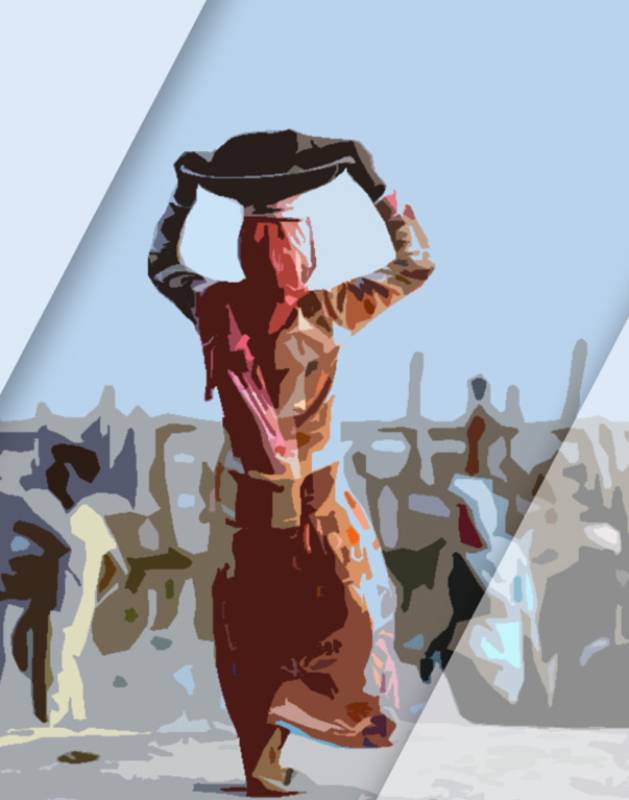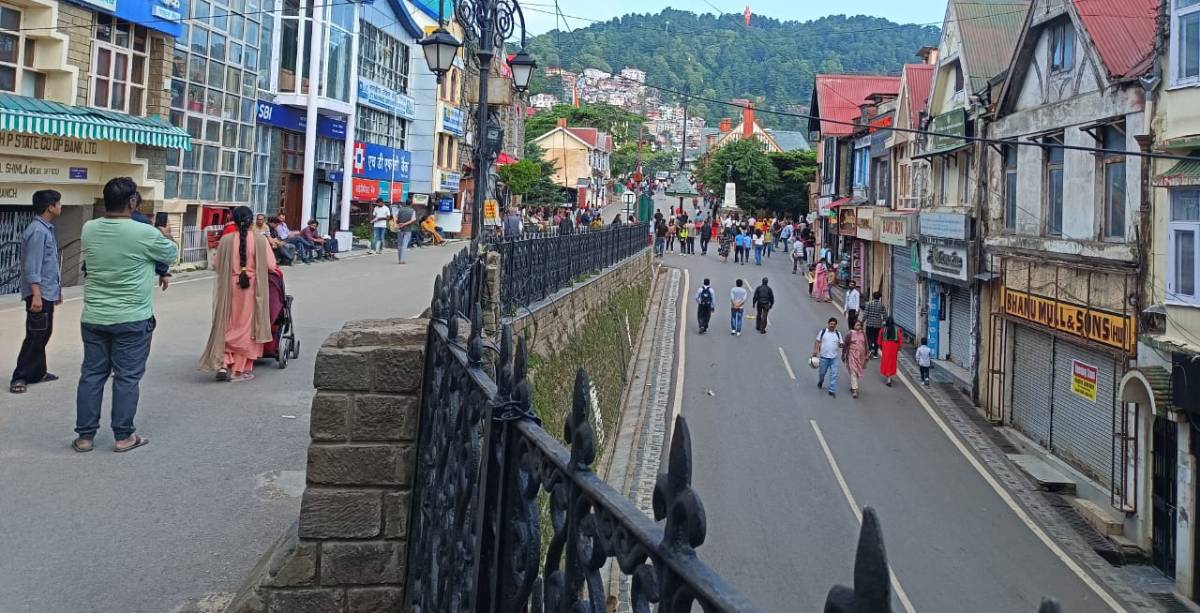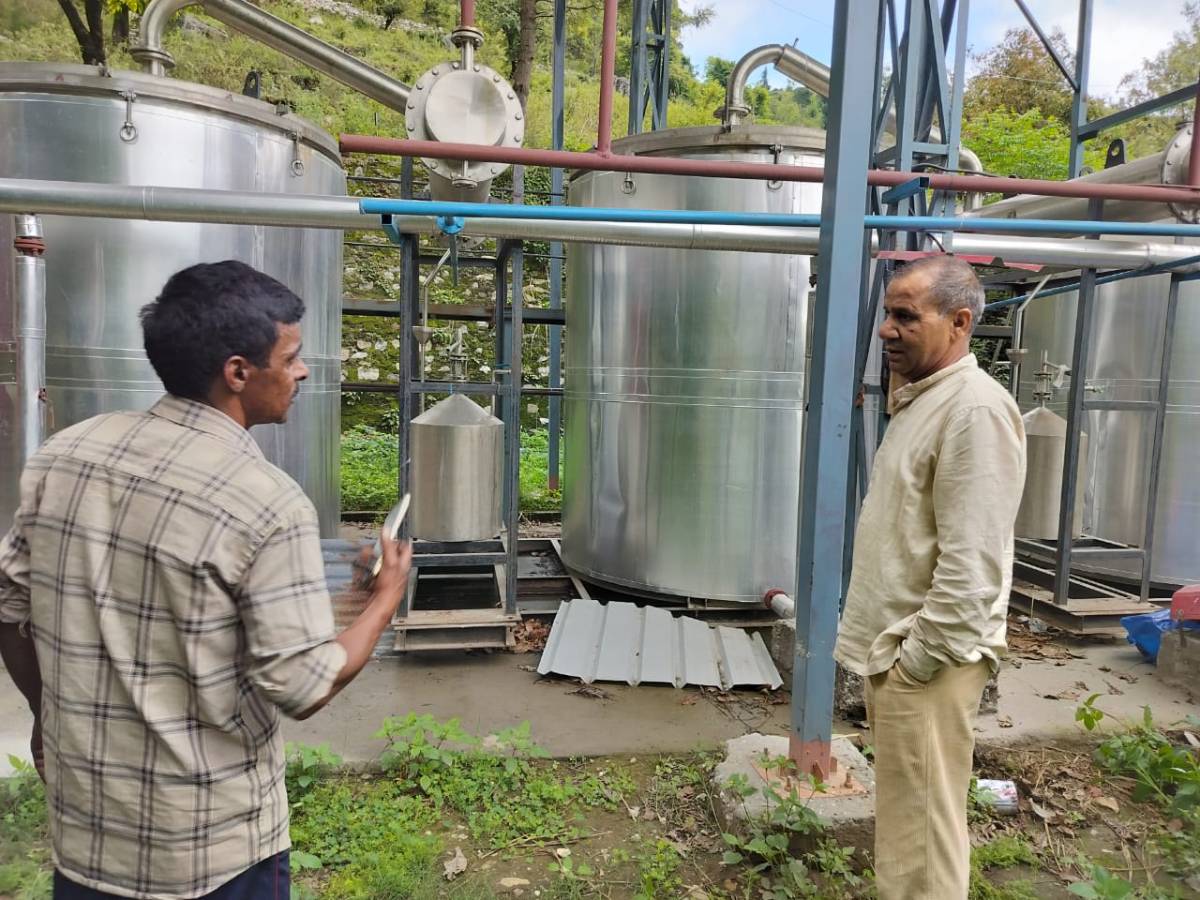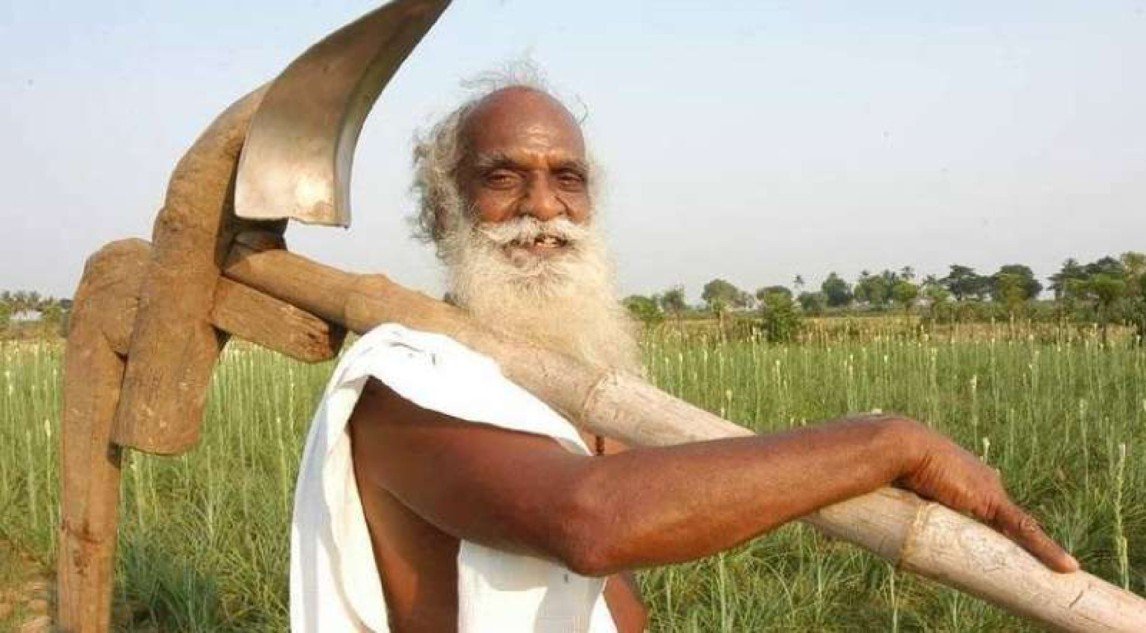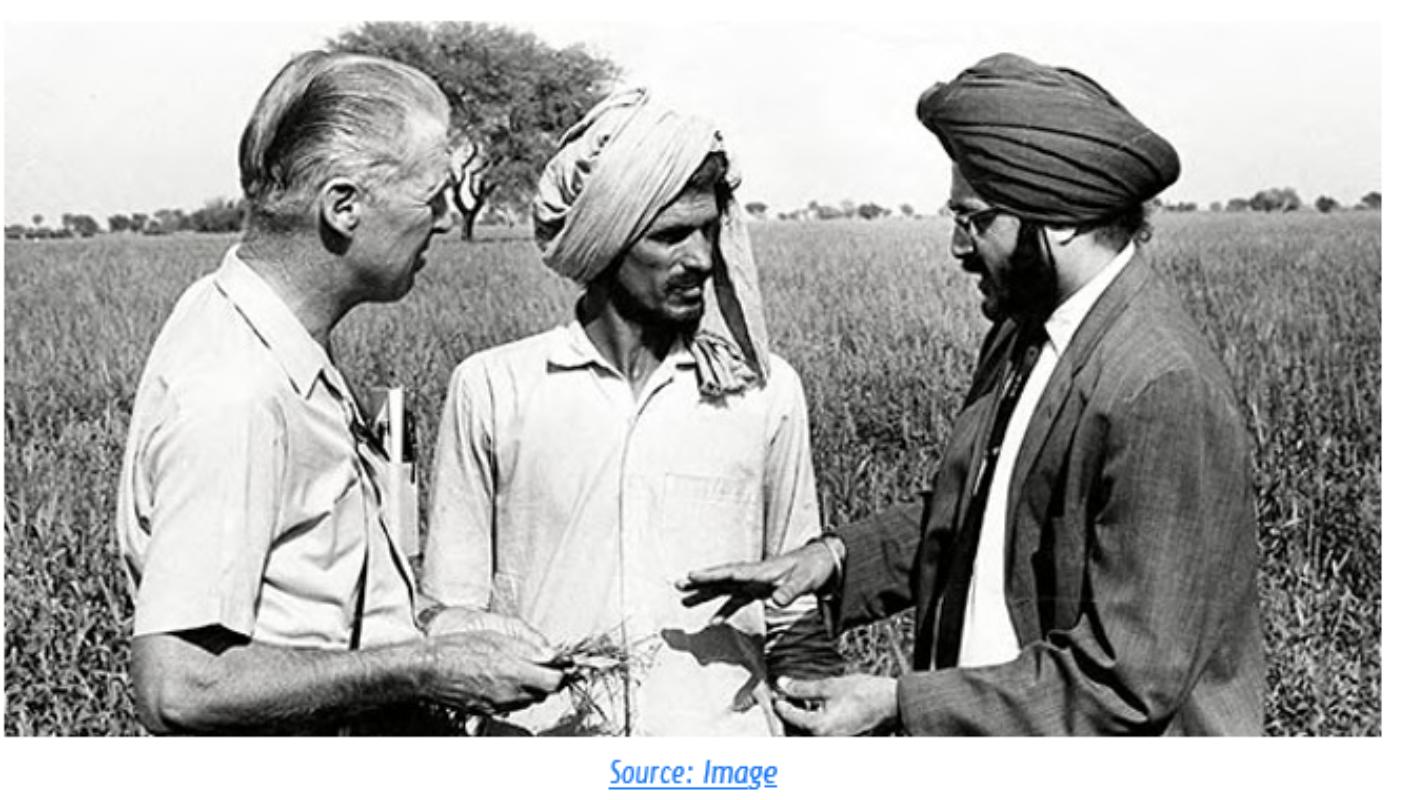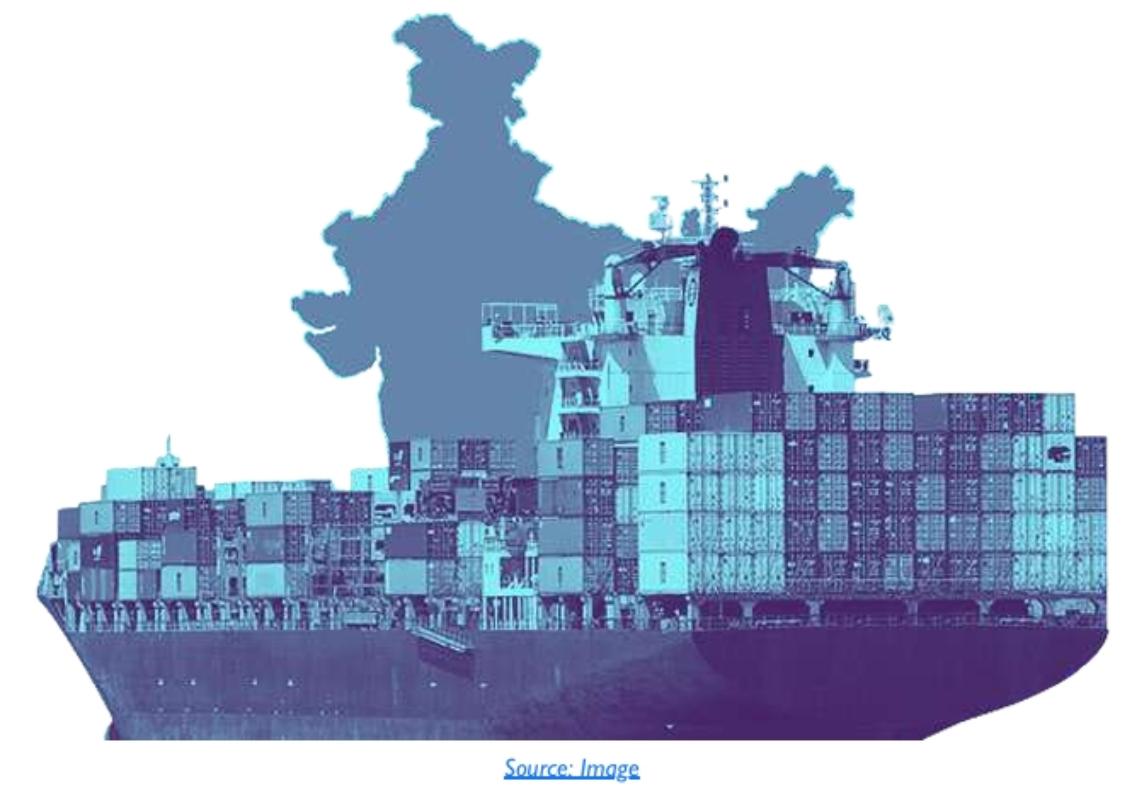There are four key labour legislations that concern us here; one on migrant workers, two on building and other construction workers, and the last on unorganised workers. Originally these laws were passed in 1979, 1996 and 2008 but these have been subsumed in the new labour codes: the migrant workers in The Occupational Safety, Health and Working Conditions Code, 2020 (OSHWC), and the other three in The Code on Social Security, 2020 (SS).
We shall however dwell on the earlier laws, for three reasons. First, the new labour codes have still to come in effect. Second, there’s not much substantial changes so far as legislation with respect to unorganized workers are concerned and where they do we have engaged ourselves. Finally – and this is the most important – whatever we have discussed about the unorganized workers has been after all in the context of the earlier laws.
The Inter-State Migrant Workmen (Regulation of Employment and Conditions of Service) Act, 1979
This Act applies to
- every establishment in which five or more inter-State migrant workmen (whether or not in addition to other workmen) are employed or who were employed on any day of the preceding twelve months;
- to every contractor who employs or who employed five or more inter-State migrant workmen (whether or not in addition to other workmen) on any day of the preceding twelve months.
Section 2(e) defines an “inter-State migrant workman” as any person who is recruited by or through a contractor in one State under an agreement or other arrangement for employment in an establishment in another State, whether with or without the knowledge of the principal employer in relation to such establishment;
Chapter II deals with the registration of establishments employing inter-state migrant workmen. Sections 4 and 5 of this chapter deal with the registration and revocation of enterprises applicable under this Act. Ordinarily, this provision alone should serve both as a database as well monitoring mechanism for the Act’s implementation. Section 6 takes this forward by prohibiting the employment of inter-State migrant workmen without registration.
Chapter III lays down elaborate provisions for licensing of contractors. Section 8 mandates that labour contractors who export workers to other states have to register at both ends and take licences. Those who employ more than five migrant workers are duty bound to provide proper wages, housing, medical facilities, pass-books, displacement allowance and anything else that the appropriate government may deem fit. And in case of transgression, section 10 provides for the revocation, suspension and amendment of licences.
Chapter IV deals with the duties and obligations of contractors.While this chapter has only one section (section 12), through various sub-sections and sub-clauses, it is quite comprehensive. Apart from complying with various provisions of the Act and providing prompt and periodic information to the state in prescribed formats, the contractor is mandated to provide to the migrant worker a pass book affixed with a passport size photograph of the workman indicating the name and place of the establishment wherein the workman is employed; the period of employment; the proposed rates and modes of payment of wages; the displacement allowance payable; the return fare payable to the workman on the expiry of the period of his employment and in such contingencies as may be prescribed in the contract of employment; deductions made; and such other particulars as may be prescribed.
Chapter V, over 6 sections, deals with wages, welfare and other facilities to inter-state migrant workmen. Section 13 prescribes that the wage rates, holidays, hours of work and other conditions of service of an inter-State migrant workman in an enterprise shall be the same as those applicable to such other workman performing the same or similar kind of work, provided that an inter-State migrant workman shall in no case be paid less than the wages fixed under the Minimum Wages Act, 1948.
Section 14 provides for an additional and non-refundable displacement allowance equal to fifty per cent of the monthly wages payable to him or seventy-five rupees, whichever is higher. The Act also provides for journey allowance and other facilities like suitable conditions of work having regard to the fact that they are required to work in a State different from their own State; suitable residential accommodation to such workmen during the period of their employment; prescribed medical facilities to the workmen free of charge; such protective clothing as may be prescribed; and in case of fatal accident or serious bodily injury to any such workman, to report to the specified authorities of both the States and also the next of kin of the workman.
Section 17 with three sub-sections, addresses the issue of actual disbursal of wages. While the contractor is responsible for payment of wages to each inter-State migrant workman employed by him, it is the duty of the principle employer to nominate a representative to be present at the time of disbursement of wages by the contractor and it shall be the duty of such representative to certify the amounts paid as wages by the contractor.
After devoting a whole chapter (Chapter VI) to Inspecting Staff, Sections 25, 26 and 27 under Chapter VII deal with contravention of provisions regarding employment of inter-State migrant workmen. Section 25 states that whoever contravenes any provisions of this Act or of any rules made thereunder regulating the employment of inter-State migrant workmen, or contravenes any condition of a licence granted under this Act, shall be punishable with imprisonment for a term which may extend to one year, or with fine which may extend to one thousand rupees, or with both, and in the case of a continuing contravention, with an additional fine which may extend to one hundred rupees for every day during which such contravention continues after conviction for the first such contravention.
The Building and Other Construction Workers (Regulation of Employment and Conditions of Service) Act, 1996
This Act, more popularly known as BOCW Act, is more comprehensive than the previous one on inter-state migrant workers.While certain aspects like registration of premises, issue of identity card, pass books and reporting mechanisms are similar, what distinguishes BOCW Act is the provision for the creation of specific fund for the safety, health and welfare measures of BOCW. Ancillary to this is a Board to implement the measures, and advisory and expert committees to help Board functioning.
It is in Chapter IV dealing with registration of building workers as beneficiaries that this law makes a departure. Section 11 lays down that “every building worker registered as a beneficiary under this Act shall be entitled to the benefits provided by the Board from its Fund under this Act”, and Section 12 with many sub-sections lays down the modalities of registration.There are two distinguishing features with respect to registration:
- the building worker should be between 18 and 60 years of age and should have engaged in building activity for not less than ninety days during the preceding twelve months to be eligible for registration as a beneficiary under this Act and, conversely, his registration will cease when he attains the age of sixty years or when he is not engaged in building or other construction work for not less than ninety days in a year; and
- a building worker who has been registered as a beneficiary under this Act shall, until he attains the age of sixty years, contribute to the Fund at such rate per mensem, as may be specified by the State Government; and conversely, when a beneficiary has not paid his contribution for a continuous period of not less than one year, he shall cease to be a beneficiary.
The law makes detailed provisions for establishment of advisory and expert committees, constitution and functioning of welfare boards, apart from the usual provisions on hours of work, working conditions, crèches, canteens, drinking water, latrines and urinals, safety committees and safety measures. But it needs to be stressed that from the BOC Workers’ perspective, the defining element is their access to welfare funds which in turn depends upon the validity of their registration.
While the BOCW Act does make provision for a fund to which, as we noted, the workers have to continuously contribute to maintain the validity of their registration as well as access to the fund, it would be clear that the leviathan of advisory and expert committees and welfare board cannot be maintained by the meagre contribution of BOC workers. It is for this reason that an enabling legislation had to be notified the same day but which was deemed to take effect earlier than BOCW Act, to which we now turn.
The Building and Other Construction Workers’ Welfare Cess Act, 1996
This Act was passed “to provide for the levy and collection of a cess on the cost of construction incurred by employers with a view to augmenting the resources of the Building and Other Construction Workers’ Welfare Boards constituted under the Building and Other Construction Workers (Regulation of Employment and Conditions of Service) Act, 1996”.
The BOCW Act is a short legislation of 15 short sections of about 2000 words. Incidentally, while the objective of the Act was to provide for the levy and collection of a cess, nowhere does the Act mention even in passing that the cess collected was meant for the welfare of BOC workers! So, we are left with only one relevant section, Section 3, which concerns with levy and collection of cess. Section 3(1) lays down that a cess would be levied and collected for the purposes of the BOCW Act, 1996, “at such rate not exceeding two per cent but not less than one per cent of the cost of construction incurred by an employer, as the Central Government may, by notification in the Official Gazette, from time to time specify.”
Other sections are purely technical in nature and, while important for maintenance purposes, have little to do with the lives of BOCW.These relate to furnishing of returns, assessment of cess, power to exempt, power of entry, interest payable on delay in payment of cess, penalty for non-payment of cess within the specified time, recovery of amount due under the Act, appeals, penalty, offences by companies, power to make rules, and repeal and saving.
While we will deal with the implementation aspect of the BOCW Act, 1996 in a separate section, the Occupational Safety, Health and Working Conditions Code, 2020 which subsumes the BOCW Act of 1996 has envisaged some changes which will lead to the closure of all the 36 state BOCW board, cancellation of about four crore registrations of construction workers as beneficiaries. The Secretary of the Campaign Committee of Construction Workers said that the “construction workers are already entitled to social security from BOCW boards which is adequately funded by a cess on the building industry and BOCW’s registration fees. On an average construction workers barely get work for 15 days in a month and earn roughly a quarter of the monthly minimum wage. And it will impact them severely, if they would be asked to pay a fixed per cent of their monthly wages into social security fund.
“The system of collecting a minimal cess of 1-2 per cent of total construction cost from a construction establishment, as per the BOCW Cess Act, 1996, is the best method for funding their social security, he added and that “ the closure of BOCW boards will lead to cancellation of lakhs of pensions which are being paid to older workers and disabled workers in different states and cancellation of millions of freeships being paid as education assistance to the children of construction workers besides cancellation of several other benefits including maternity benefits” (Economic Times, July 17, 2019)
Moreover, under draft rules framed pitch for “self-assessment” of Cess. This marks a break with legal tradition in the construction sector, wherein till now an assessing officer was authorised to indicate the cess amount payable by the employer. A cess that is not less than 1% of the cost of construction, “shall be paid by an employer in advance, on the basis of his self-assessment duly certified by Chartered Engineer at the time of approval or before the commencement of the work,” stated the draft rules of the Code on Social Security, 2020, notified by Union Ministry of Labour and Employment on Sunday, November 15.
The draft labour rules have been notified by the Centre just days ahead of a general strike call by 10 central trade unions and several federations and associations of workers, including those in the unorganised sector, on November 26.
The draft rules, which elaborate the procedure for self-calculation and payment of cess, mark a break with the legal tradition in the construction sector, wherein earlier, under The Building and Other Construction Workers’ Welfare (BOCW) Cess Rules, 1998, an assessing officer was authorised to indicate the cess amount payable by the employer, after scrutinising the information furnished by the latter.
Furthermore, the rate of interest for delayed payment of cess has been reduced from 2% every month or part of a month to 1%, thereby giving a “breather” to the offenders.
It may be noted that the 2020 Code on Social Security already reduces the coverage of the legal provisions under it by not including any construction work that employs less than 10 workers or any project for residential purposes that is worth up to Rs. 50 lakh. Such a threshold amount was Rs. 10 lakh under the earlier BOCW Act, which also required all the establishments – irrespective of the number of workers employed – to get registered under it. Further, experts feel, relaxing the threshold limit (less than 10 workers) for cess collection on residential projects would also put “negative pressure” on the registration of construction workers employed for such activities with the welfare board.
Finally, the OSH Code robs vulnerable construction workers of the legal shield that was meant to protect them. As many as 64 clauses of the 1996 BOCW Act have now been reduced to only nine under the social security code; while 15 of those under the 1998 rules are now down to only seven.
The Unorganised Workers’ Social Security Act, 2008
This is the last legislation we consider for our purposes. This is essentially an outcome of Arjun Sengupta chaired massive NCEUS Report on Conditions of Work and Promotion of Livelihoods in the Unorganised Sector submitted in 2007, although it falls far short in covering the entire gamut of issues raised. Below, we present the salient aspects of the Act:
- According to section 2(m), an unorganised worker “means a home-based worker, self- employed worker or a wage worker in the unorganised sector and includes a worker in the organised sector who is not covered by any of the Acts pertaining to welfare Schemes as mentioned in Schedule-II of this Act”. And Schedule II mentions the following six Acts:The Workmen’s Compensation Act, 1923; The Industrial Disputes Act, 1947; The Employees’ State Insurance Act, 1948; The Employees’ Provident Funds and Miscellaneous Provisions Act, 1952; The Maternity Benefit Act, 1961; and The Payment of Gratuity Act, The situation has remained exactly the same under The Code on Social Security, 2020 vide section 2(88).
- In real terms, what this means is that the unorganised workers are not entitled to the benefits under ESI that is available to workers in establishments employing 10 or more people; nor EPF, Employees’ pension Scheme, Employees Deposit Linked Insurance Scheme or gratuity that workers working in establishments employing 20 or more.
- Section 3(1) provides for formulation of schemes by the Central Government for different sections of unorganised workers on matters relating to (a) life and disability cover; (b) health and maternity benefits; (c) old age protection (d) any other benefit as may be determined by the Central Government.
- Section 4 relates to funding of the schemes formulated by Central Government
- Section 5 envisages constitution of National Social Security The National Board would recommend the Central Government suitable schemes for different sections of unorganised workers; monitor implementation of schemes and advise the Central Government on matters arising out of the administration of the Act
- Section 6 has provision for constitution of similar Boards at the State level
- Section 8 prescribes record keeping functions by the District For this purpose, the State Government may direct (a) the District Panchayat in rural areas; and (b) the Urban Local Bodies in urban are as to perform such functions.
- Section 9 provides for setting up of Workers’ Facilitation Centre to (a) disseminate information on social security schemes available to them (b) facilitate registration of workers by the district administration and enrollment of unorganised workers.
- Section 10 provides for eligibility criteria for registration as also the procedure for registration under the Act.
- Sections 11-17 contain miscellaneous provisions for implementing the Act.
Excerpts from Rules framed under the Act
- The Central Government in 2017, converged the social security scheme of Aam Aadmi BimaYojana (AABY) with Pradhan Mantri Jeevan Jyoti BimaYojana/ Pradhan Mantri Suraksha Bima Aam Aadmi Bima Yojana (AABY) to provide life and disability coverage to the unorganized workers, depending upon their eligibility. The converged PMJJBY/OMSBY scheme is for the beneficiaries in the age group 18-50 years and provides for coverage of Rs. 2 lakhs, in case of natural death and Rs. 4 lakhs in case of accidental death.
- The Converged schemes are being implemented through Life Insurance Corporation of A premium of Rs. 342(330+12) per annum would be required for the converged schemes. The premium would be shared between the State Government and Central Government in the ratio of 50:50. This Ministry has urged all the State/UT Governments to give their financial concurrence to cover 50 percent of the premium for all eligible unorganised workers. Around 2.80 crore beneficiaries have been covered under this scheme, as per data furnished by LIC, during the current year 2018-19.
- The various social security schemes are currently being run by different Ministries/ Departments under Schedule II of the “Unorganized Workers Social Security Act ( UWSSA), 2008” for welfare of the unorganized workers and agencies at the State level, with different eligibility criteria, enrolment processes and benefits there under, etc.
- Indira Gandhi National Old Age Pension Scheme (Ministry of Rural Development);
- National Family Benefit Scheme (Ministry of Rural Development);
- Janani Suraksha Yojana (Ministry of Health and Family Welfare);
- Handloom Weavers’ Comprehensive Welfare Scheme (Ministry of Textiles);
- Handicraft Artisans’ Comprehensive Welfare Scheme (Ministry of Textiles);
- Pension to Master Craft Persons (Ministry of Textiles);
- National Scheme forWelfare of Fishermen andTraining and Extension (Department of Animal Husbandry, Dairying & Fisheries);
- Aam Aadmi Bima Yojana (Ministry of Labour and Employment); (now converged with PMJJBY/PMSBY)
- Rashtriya Swasthya Bima Yojana (Ministry of Health and Family Welfare).
While we will examine the implementation aspects of the 2008 Act in a later section, it may be worthwhile to check to what extent the Code on Social Security, 2020 (CSS) which subsumes the 2008 Act will impact the lives of unorganized workers. Chapter IX of CSS does envisage welfare schemes for the unorganised workers.
As per section 109(1), “the central government shall frame and notify, from time to time, suitable schemes for unorganised workers on matters relating to (i) life and disability cover; (ii) health and maternity benefits, (iii) old age protection; (iv) education; and (v) any other benefits as may be determined by the Central Government”. And as per section 109(2), the “State Governments shall frame and notify, from time to time, suitable welfare schemes for unorganised workers, including schemes relating to (i) provident fund; (ii) employment injury benefit; (iii) housing; (iv) educational schemes for children; (v) skill upgradation of workers; (vi) funeral assistance; and (vii) old age homes”.
That is not all. Sub-section (4) lays down that “every scheme notified by the Central Government under sub-section (1) shall provide for such matters that are necessary for the efficient implementation of the scheme including matters relating to… (i) scope of the scheme;(ii) authority to implement the scheme; (iii) beneficiaries of the scheme; (iv) resources of the scheme; (v) agency or agencies that will implement the scheme; (vi) redressal of grievances; and (vii) any other relevant matter.
Once again, all the above provisions in the Social Security Code of 2020 as enumerated in the above two paragraphs is nothing new, as sections 3 and 4 of The Unorganised Workers’ Social Security Act, 2008 had laid down precisely these aspects over a decade ago.The criticism then and now remains the same: legislative power to formulate substantive provisions remained in the executive domain – which means any future change in many substantive provisions of the Code could be made through executive decisions by bypassing the Parliament and other stakeholders. But the real problem with the current Code is that it would make redundant many sector-specific schemes that have been functioning reasonably well so far, such as beedi making, mining etc., providing robust health, education and other benefits and also having legal backing. Moreover, several sector-specific cesses were withdrawn in 2016 and 2017 (except the one for building workers).
Implementation Characterized by Rigidity and Ineptitude
The Inter-State Migrant Workmen (Regulation of Employment and Conditions of Service) Act was passed forty-one years ago in 1979, The Building and Other Construction Workers (Regulation of Employment and Conditions of Service) Act in 1996 and The Unorganised Workers’ Social Security Act passed on the last day of December 2008 came into effect in 2009. If decades after passage of these Acts, various welfare measures had been truly in place, then post lockdown tens of thousands of migrant workers wouldn’t have trudged hundreds – and in some cases, thousands of kilometers – to reach home. Perhaps it is symptomatic of the times we live in that the Solicitor General of India reportedly said, “there is no person walking on the roads in an attempt to reach his/her home towns/villages” while filing an affidavit on behalf of, none other than, the Union of India! This happened in the context of a petitioner seeking to mitigate the misery of thousands of migrants who were walking long distances on highways to go to their villages because there were no jobs, no place to stay, and no money to buy food, and no reliable means of transport (Chhokar, 2020).
Then on 5th Iune 2020, the National Human Rights Commission (NHRC), in an intervention application, drew the Supreme Court’s attention to the 41-year-old law on inter-state migrants that could have safeguarded the interests of migrant workers and therefore averted the tragedy had it been implemented effectively.
Moreover, according to experts, less than 5 per cent of the migrant workers are enrolled with government agencies, with most inter-state workmen not even aware of their rights. It is held that “it is never the lack of legislation but the lack of will, efficacy and implementation of the law that fails it, and failure of the government and the executive to enforce the Act has left it ineffective” (Sinha, 2020)
It is also symptomatic that things didn’t improve thereafter. As an extensive report of ActionAid revealed, months after the lockdown was lifted informal sector workers continued to struggle with low wages and high debts (Pal, 2020).
It is also held that the full and proper implementation of this law would have meant that state governments had complete details of inter-state migrant workmen coming through contractors within their states. While this would still leave out migrants who move across states on their own,a large segment would be automatically registered due to the requirements of the Act. States would consequently have been better prepared to take steps to protect such workmen during this lockdown. However, almost no state seems to have implemented this law in letter and spirit.
Some observers hold that since the Act is barely implemented, it exists as another law that potentially provides rent-seeking opportunities to enterprising government inspectors while failing in its main objective. Another consequence of weak implementation is the absence of government preparedness and the consequent failure in preventing genuine hardships for vulnerable groups (see Krishnan, et. al., The Indian Express, May 9, 2020). They further hold not only does this raise questions about the utility of such well-meaning but impractical laws, it also highlights the lack of state capacity to enforce such provisions.To implement this law alone, government inspectors would not only have to maintain records of inter-state workmen, but also verify whether all the other requirements regarding wages, allowances, accommodation and health care are complied with.
But it is difficult to agree with them that the primary reason for this seems to be the onerous compliance requirements set out in the law. The argument that the law not only requires equal pay for inter-state workmen, but also requires other social protection like payments of different allowances, and requirements that contractors provide accommodation and healthcare for such workmen would make their employment significantly more expensive than intra-state workmen, doesn’t hold water. After all, contractors would be the last people to source workers from other states and herd them to work in establishments in other states if the cheaper alternative of locating local labour – or even intra-state migrant workers – was available. So, having done that, it becomes incumbent to provide journey allowance – which is after all a one-time expense – and shanties that go for living quarters.
Further, the implementation of BOCW Act, 1996 raises questions of both bureaucratic sloth as well abdication of fiduciary accountability. For example, in 2018, a case came up in the Supreme Court in which it emerged that while more than Rs 37,400 crore had been collected for the benefit of construction workers, but only about Rs. 9,500 crore had been utilized for their benefit. But that’s not all. Justice Lokur was constrained to observe, “no state government and no UT seems willing to fully adhere to and abide by (or is perhaps even capable of fully adhering to and abiding by) two (relevant) laws”, namely, The Building and Other Construction Workers (Regulation of Employment and Conditions of Service) Act, 1996 (BOCW Act) and the Building and Other Construction Workers’ Welfare Cess Act, 1996, (Cess Act).A worse comment was to follow. Failing to get the exact figure of funds collected so far through the Cess, the top court said that “it is quite shocking that even the CAG does not have all the figures and whatever figures are available, may not be reliable”.
But it is not just the lack of capacity or competence of the bureaucracy to deliver. Even the minimum ethical standards needed to safeguard the interests of the very people they are appointed to serve is missing. While the bureaucracy can be variously officious, disdainful, exploitative and corrupt toward those who need its service, it readily genuflects to political masters to divert funds they hold in trust. Recently therefore, in September 2020, trade unions led a protest against the YSRCP government for diverting Rs 450 crore from the Andhra Pradesh Building and Other Construction Workers Welfare Board (APBOCWW) for other state schemes instead of utilising the funds for construction workers.
This is in spite of the advisory issued on 24 March 2020 by Union Minister of State, I/C, Labour and Employment to all Chief Ministers/ LGs of all the States/UTs. In the advisory, under Section 60 of the Building and Other Construction Workers Act, 1996 all State Governments/UTs have been advised to transfer funds in the account of construction workers through DBT mode from the Cess fund collected by the Labour Welfare Boards under the BOCW Cess Act. About Rs 52,000 crore is available as cess fund and about 3.5 crore construction workers are registered with these Construction Welfare Boards. Earlier too, the previous Telugu Desam Party government had utilised about Rs 600 crore from the construction workers’ fund for other purposes.
There are of course, some bright spots. Post Covid havoc, on March 24, 2020, Himachal Pradesh announced Rs 30 crore relief for construction workers. But the case of Karnataka is the more typical. Even before Covid-19 had struck the country, a huge corpus remained unspent with the Karnataka Building and Other Construction Workers’ Welfare Board could finally be used for the purpose it is meant.The state government has started efforts to create a roadmap to use Rs 8,500 crore accumulated with the Board over the past few years.
Although the corpus collected over the years is huge, the government has not taken up major efforts on spending it. Data show that about Rs 641 crore has been spent on 5.75-lakh construction workers and their families in the past eight years. There are about 21.62 lakh construction workers in Karnataka.
In fact, the Labour Department also courted controversy when a senior IAS officer offered to divert a portion of funds to the state government’s flood relief work last September. The labour secretary had made the pitch following chief minister BS Yediyurappa’s direction to heads of departments to mobilise funds for mitigation. The department withdrew the plan after it came under fire. The Supreme Court is also monitoring the state government’s utlisation of Welfare Board funds.
Finally, beyond the inter-state migrants workmen or BOC workers, there still remains a far larger mass of unorganized workers that the state tried to address through the 2008 Act.We have already noted earlier the PLFS data and CMIE data indicating large scale unemployment even before Covid. However, Bhandari and Dubey’s study referred to earlier does indicate the rise of formal employment. But we now also know that more regular-income labour are denied social security before Covid-19 hit India (Jha, 2020):
“More than half the workers in India (51.9 per cent), who were earning regular income, had no social security net in 2018-19.The share of such workers went up.The labour market became more vulnerable a year before the coronavirus pandemic hit India as the share of unorganised sector workers rose, official data released on Thursday showed. While the share of workers earning regular salary went up in 2018-19 compared to 2017-18, the proportion of such hands without any social security benefits also increased pointing towards continued trend of informalisation, experts pointed out.”
It is not difficult to figure out the reasons for the dismal condition of the migrant workers. First is the very nature of their employment. Considering their high open unemployment status (Rodgers, op. cit.) the unorganised workers are scattered in vast number of enterprises that are mostly small and unregulated. They precariously hold on to whatever intermittent employment they can find, often moving from one site or employer to another. Their uppermost concern is not to lose the day’s wage opportunity. Such uncertainty – and the vulnerability that goes with it – dampens whatever enthusiasm the unorganised worker may muster to knock at the doors of state machinery to get registered for possible benefits about which he has little idea and even lesser hope of receiving.
The dispersed and precariousness of their work life is compounded by their lack of organization. In our opinion, this is the most important factor. Even a novice industrial relations student will point out that three things. First, all over the world it is only when workers have organized in trade unions and waged long-drawn struggle, have they received any benefits. Second, labour legislation is essentially welfare legislation reflecting social necessity as well the acceptance of unequal bargaining power of unions and labour therefore needs protective legislation. Finally, labour can ask for additional benefits when jobs exist in the first place. It has been quite some time since one of the foremost industrial relations scholar and field researcher provided detailed accounts of how mainstream trade union leaders had failed to adequately respond to work related issues induced by changes in the macroeconomic environment and management strategies in the organized sector (Ramaswamy, 1989). Thirty years down the line, trade unions have become more enfeebled, if not irrelevant.
References:
“Committee for Construction Workers opposes govt move to subsume labour laws into 4 codes”, The Economic Times, July 07, 2019 https://economictimes.indiatimes.com/news/ economy/policy/committee-for-construction-workers-opposes-govt-move-to-subsume- labour-laws-into-4-codes/articleshow/70116722.cms?from=mdr Accessed June 13, 2020
Chhokar, Jagdeep S., ‘Migrant Worker Crisis: The Supreme Court Has Abdicated All Responsibility’, The Wire, 19/May/2020 https://thewire.in/law/supreme-court-migrant- workers-crisis-abdicate-responsibility.
Jha, Somesh, `More regular-income labour denied social security before Covid-19 hit India’, Business Standard, June 6, 2020 https://www.business-standard.com/article/ economy-policy/more-regular-income-labour-denied-social-security-before-covid-19-hit- india-120060501032_1.html
Krishnan, K.P., Burman, Anirudh, and Rai, Suyash, ‘Migrant Workmen Act, 1979, must be rationalised to remove requirements that disincentivise formalisation’, The Indian Express, May 9, 2020 https://indianexpress.com/article/opinion/columns/india-lockdown-inter-state- migrant-workmen-act-6400710/ Accessed 12 June 2020
Pal, Sumedha, `Informal Sector Workers Continue Struggle: Low Wages, High Debts’, NewsClick, 08 Nov 2020 https://www.newsclick.in/informal-sector-workers-continue- struggle-low-wages-high-debts-actionaid-report Accessed 09 Nov 2020
Ramaswamy, E.A.Worker Consciousness and Trade Union Response, Delhi: Oxford, 1989
Rodgers, Gerry, `Labour and Employment in India: A 50-Year Perspective’,The Indian Journal of Labour Economics (2020) 63: 1-19
Sinha, Bhadra, `This 1979 inter-state workmen law could help avert migrant crisis if enforced strictly’, The Print, 8 June, 2020 https://theprint.in/judiciary/this-1979-inter-state-workmen- law-could-help-avert-migrant-crisis-if-enforced-strictly/437494/ Accessed 12 June 2020

